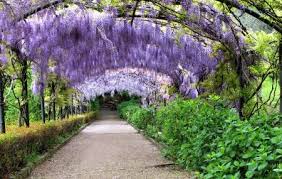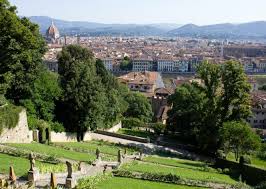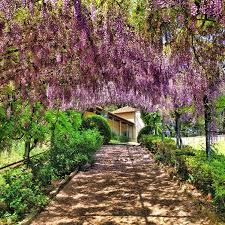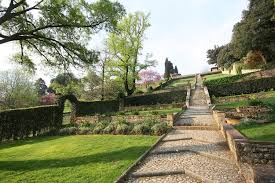Four hectares (c. 10 acres) of woods, garden and fruit orchards flanked by the medieval walls of the city, the Bardini Garden is not only nature, but also culture, art and history: a part of Florence. Situated between Costa San Giorgio and Borgo San Niccolò, it preserves in the center of the city a pristine place, all to discover.
The fascination of a Garden forever enchanted
“…A delightful and vast garden, which, even though it lies on a rather steep and precipitous hill, is comfortably accessible by carriage on a convenient and beautiful road…”
Thus cited a Florence guide at the end of the 1800’s and so it has remained even today: a Garden with a unique panorama over Florence that occupies a large part of a hill bordered by the medieval walls of the city.
Beginning in medieval times, the Bardini Garden belonged to wealthy families who followed one after another: created with an agricultural purpose, it was transformed over the course of the centuries into a splendid Italianate garden. In the first years of the 1900’s it was used by the owner for whom it is named, the collector Stefano Bardini, known as the “prince of the antiquarians”, also as a spectacular setting of representation where he could welcome his well-to-do clientele.
II The Bardini Garden integrates three gardens, diverse as to epoch and style
The Italianate Garden, with the magnificent baroque staircase
The English Wood which, with its exotic elements, represents a rare example of an Anglo-Chinese garden;
The Agricultural Park in which a new fruit grove and the splendid pergola of wisteria have found their place.
The Bardini Garden, thanks to the intervention of the Peyron and Bardini Monumental Park Foundation, represents today an excellence of restoration: finally, this green heart of Florence has returned to beat in its city and for its city.
Wisteria is one of the loveliest plants and it is most loved by the visitors to the Bardini Garden. It must be that the pergola is completely covered by these violet colored bunches or because it leads all the way to the Loggia del Belvedere from which one may enjoy the power of the panorama over Florence and San Miniato al Monte.
Like the Garden and the Villa Bardini, this flower carries with it an ancient story and a far-away provenance: it is told that wisteria was brought as a rarity from China by Marco Polo, even that the actual arrival in our country was attested to beginning in 1700.
The speciality of this plant is its capacity to grow in a rapid, intense and constant way, rendering wisteria one of the symbols of the development of human knowledge: the climbing plant, just as human awareness develops, quickly with a constant spiral movement until it embraces the world beyond.
From lilac to violet, from a blue mauve to tinged-with-pink, the spectacle of the flowering of the wisteria is to be admired at the Bardini Garden in spring, from April to







